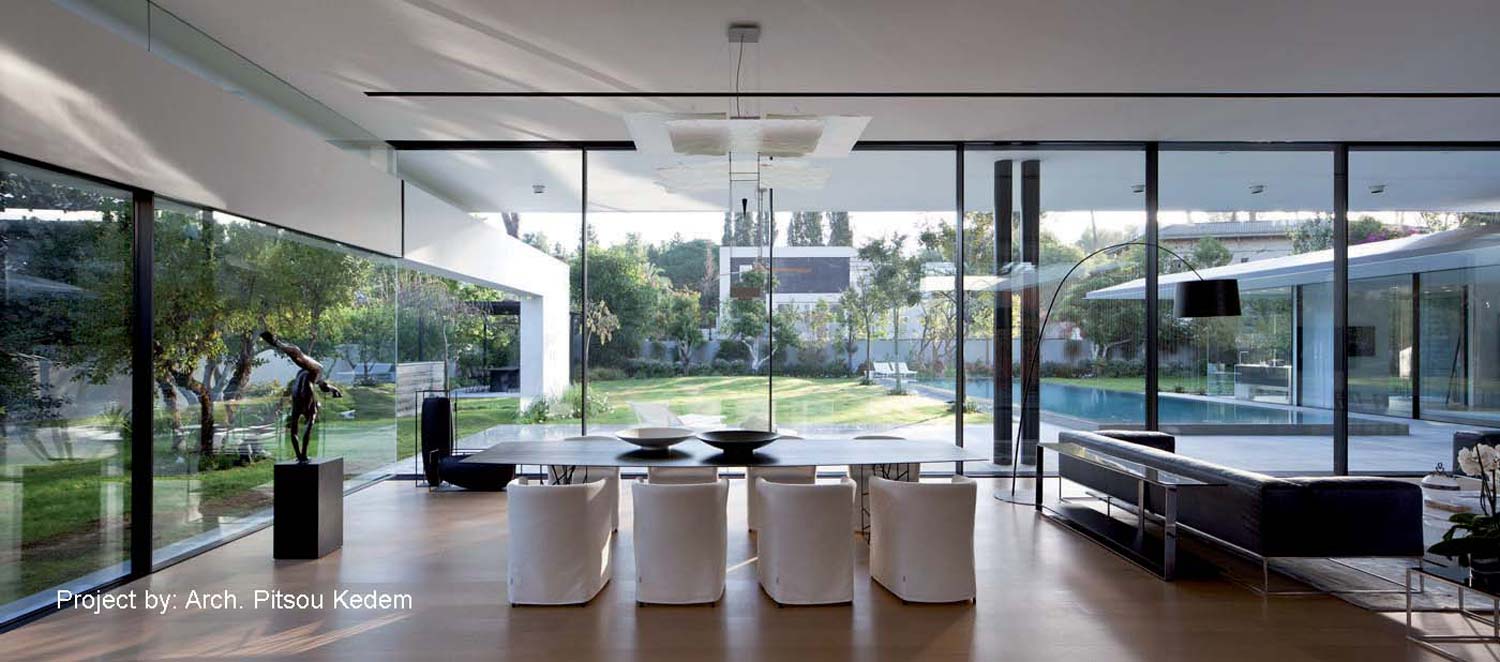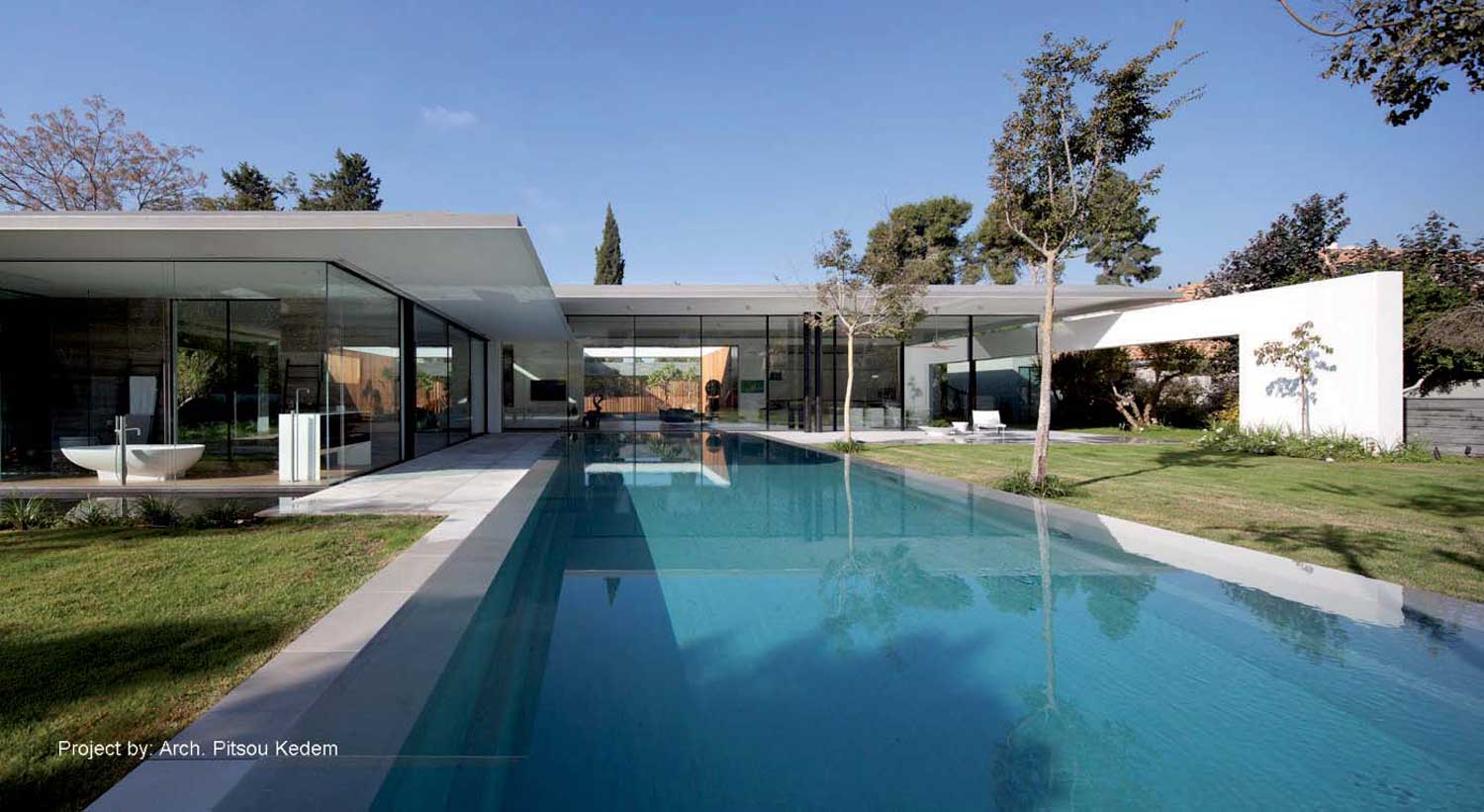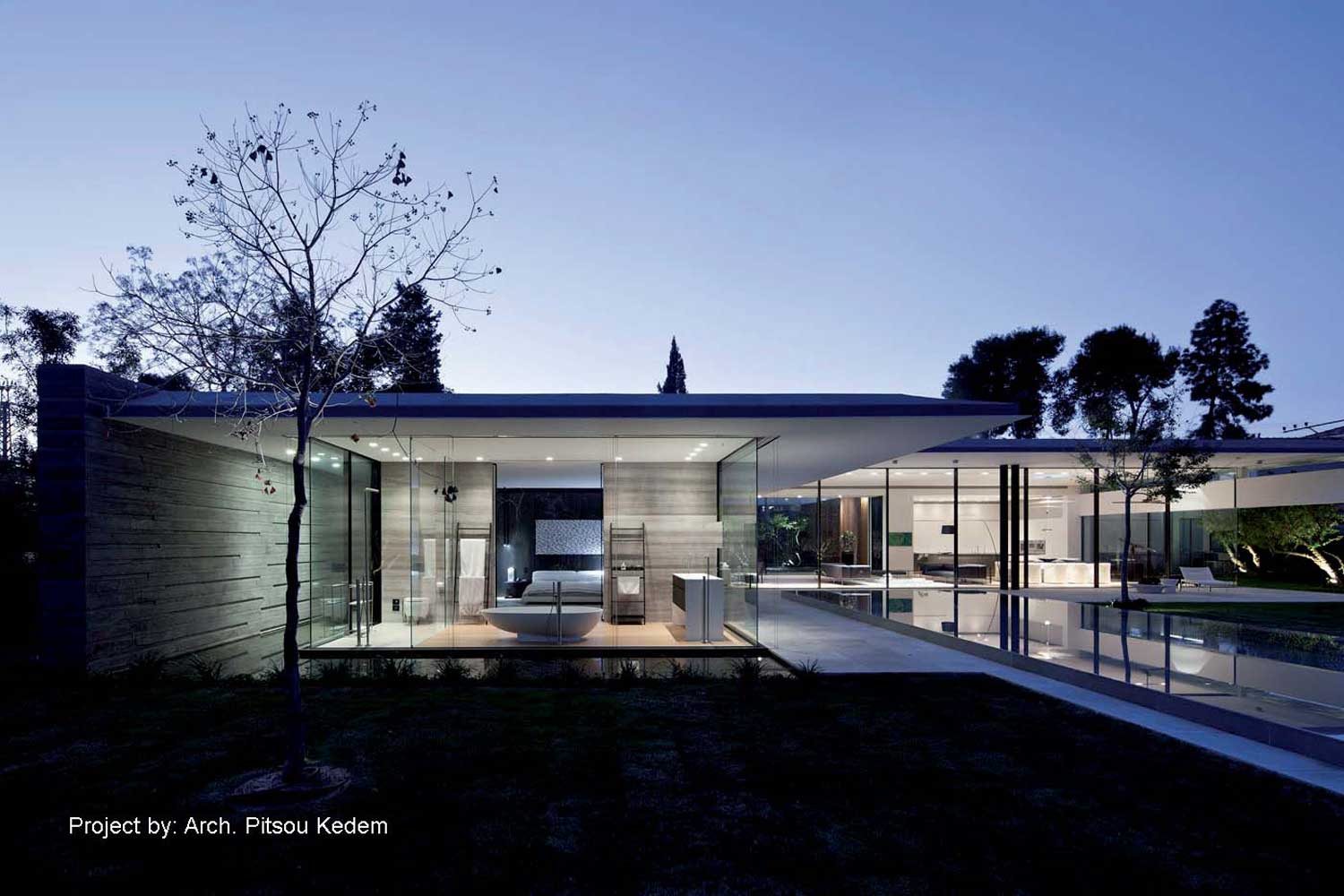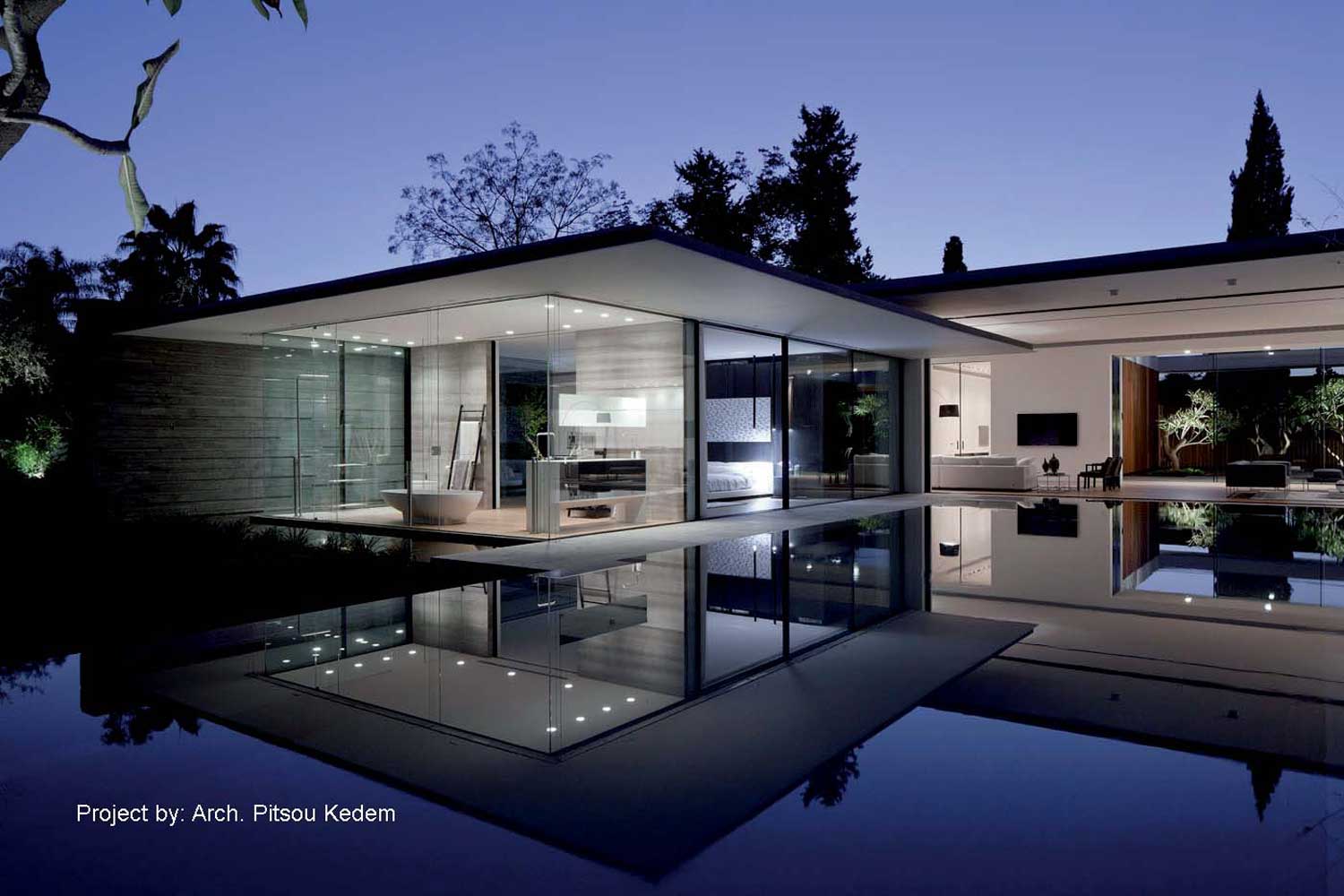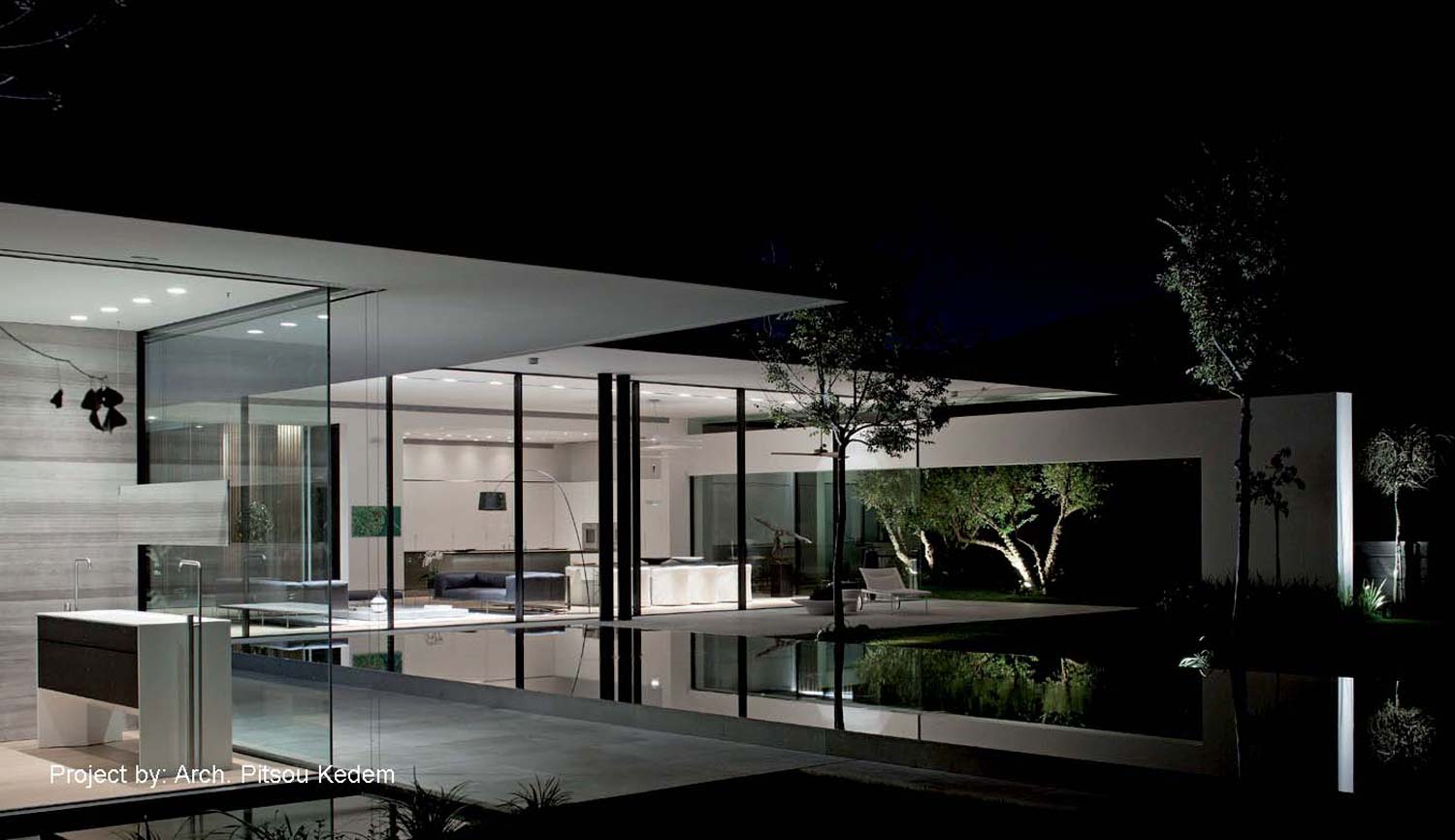Classical architecture, shaped by ecclesiastical traditions, aspired to the sublime, soaring upwards through towering columns and vertical windows. In contrast, modern architecture—particularly in residential design—treats the skyline as a canvas for human expression, emphasizing horizontal dimensions or even reducing it to a mere functional element serving human needs.
Across all eras, the skyline remains the most fundamental reference point for situating a building within its real or conceptual context. The presence of neighboring structures follows in importance, then trees, and other environmental factors. This hierarchy may explain why private residences continue to embody a more sculptural approach—free from the constraints of urban integration, they exist at the intersection of architecture and art.
At first glance, this house appears as a floating horizontal prism, framed by a dual skyline—above and below. A second look invites an exploration of its structural balance, revealing how this prism seemingly defies gravity while remaining tethered to the landscape. The interplay of elements—a horizontal concrete wall resting on a suspended steel beam, hovering above an English garden—creates a composition that appears both weightless and firmly anchored. The result is an orchestrated equilibrium, a structure perpetually poised in a state of gravitational defiance.


